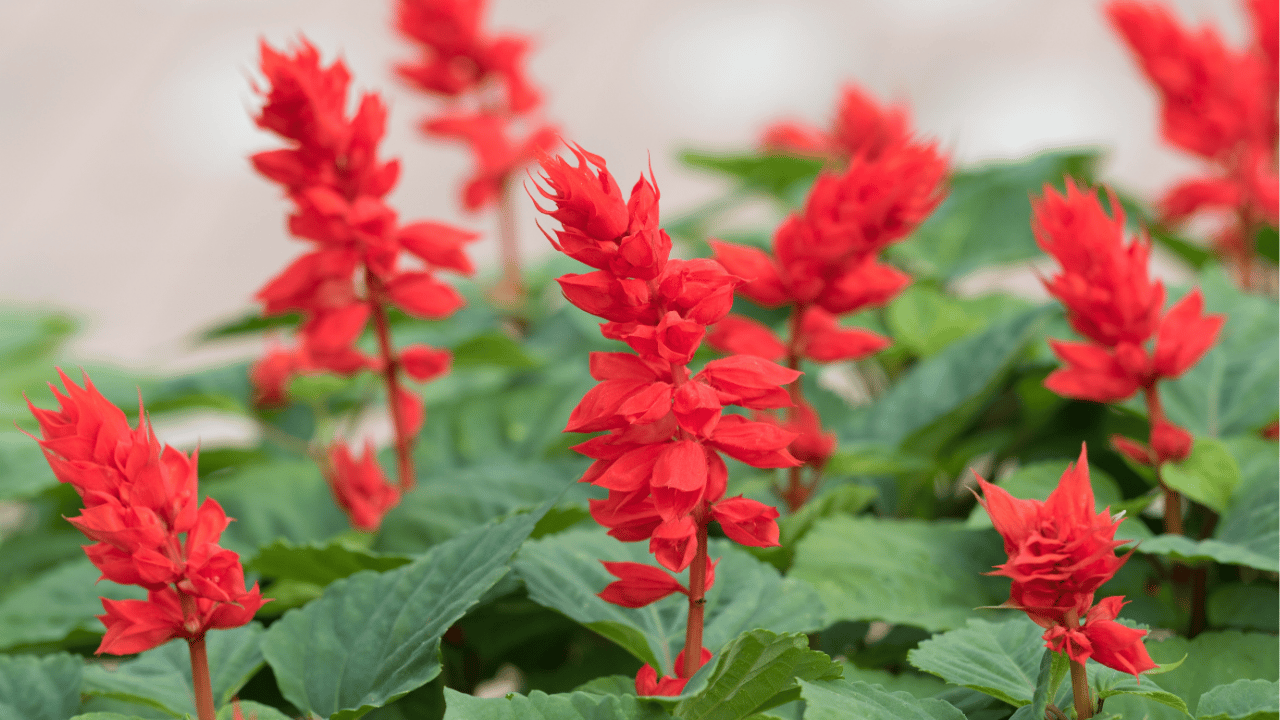Salvia plants are known for their striking colors, long blooming periods, and ability to attract pollinators like bees and butterflies. They are a favorite among gardeners due to their versatility and resilience. However, to truly thrive, these beautiful perennials need specific care. In this guide, we’ll explore ten essential tips to keep your salvia plants healthy, vibrant, and flourishing throughout the season.
1. Choose the Right Location
Selecting the proper location for your salvia is crucial. They thrive in full sun, so aim for a spot that gets at least six hours of direct sunlight each day. Although salvia can tolerate partial shade, full sun will ensure the best flowering and plant health.
When planting, ensure the soil is well-draining. Salvia doesn’t do well in soggy conditions, which can lead to root rot. If your garden has heavy clay or poor drainage, consider planting your salvia in raised beds or amending the soil with organic matter to improve aeration and drainage.
2. Water Wisely
While salvia plants are relatively drought-tolerant, they still need regular watering, especially during their first year of establishment. Deep watering once a week is more effective than frequent shallow watering, as it encourages roots to grow deeper.
However, avoid overwatering. Let the soil dry out between waterings, particularly in cooler seasons or if your salvia is growing in a less sunny spot. Overwatering can lead to fungal diseases or cause your plants to become leggy.
3. Prune Regularly
Pruning your salvia is key to maintaining a tidy appearance and encouraging continual blooming. After the first flush of flowers fades, deadhead spent blooms to stimulate more growth. This will keep your plants looking fresh and vigorous throughout the summer.
In the early spring, before new growth starts, perform a hard prune, cutting the plant back by about one-third. This rejuvenates the plant and prevents it from becoming too woody and sprawling as the season progresses.
4. Provide Well-Drained Soil
Salvias prefer slightly sandy or loamy soils that drain quickly. If your garden soil is heavy or clay-based, add compost or perlite to improve its texture and drainage. This adjustment ensures that roots won’t sit in water, which can cause decay.
Additionally, salvia plants enjoy slightly alkaline to neutral pH levels. If your soil is too acidic, consider adding garden lime to adjust the pH. Regular soil testing can help you maintain the optimal conditions for healthy plant growth.
5. Mulch Smartly
Applying mulch around the base of your salvia plants helps conserve moisture, suppress weeds, and regulate soil temperature. Organic mulches, such as wood chips or straw, are ideal as they break down over time and enrich the soil.
However, be careful not to pile mulch directly against the stems of the plant. Leave a few inches of space around the base to avoid issues with rot or pests that can hide in the mulch and damage your plants.
6. Fertilize Sparingly
Salvia is a light feeder, meaning it doesn’t require heavy fertilization. A light application of balanced fertilizer in the spring, as new growth begins, is generally sufficient. Over-fertilizing can lead to excessive leaf growth at the expense of flowers.
Opt for a slow-release or organic fertilizer, which will feed the plants gently over time. Avoid high-nitrogen fertilizers, as they promote leafiness rather than the desired profusion of blooms.
7. Support Tall Varieties
Some salvia varieties, like ‘Mystic Spires’ or ‘Amistad,’ can grow quite tall and may need additional support to prevent them from toppling over. Stake them early in the growing season, before they get too large, to avoid damaging roots later.
Use natural-looking stakes or plant rings, and tie the stems loosely with soft ties to ensure airflow and prevent stress. Providing this support will keep your plants upright and help them display their flowers more effectively.
8. Divide Mature Plants
Mature salvia plants may start to decline if left in the same spot for too many years. Dividing them every 3 to 5 years helps rejuvenate their growth and increase flowering. The best time to divide is in early spring or fall when temperatures are cooler.
Dig up the entire clump and use a sharp spade to divide it into sections, making sure each section has plenty of roots. Replant the divisions at the same depth, and water them well to help them establish in their new location.
9. Control Pests Naturally
Salvia plants are generally resistant to pests, but aphids, spider mites, or whiteflies may occasionally be a problem. Rather than using chemical pesticides, which can harm beneficial insects, consider natural remedies like neem oil or insecticidal soap.
Encouraging predatory insects, such as ladybugs, can also help keep pest populations in check. Regularly inspect your plants for signs of infestation and treat any problems early before they have a chance to spread.
10. Protect in Cold Weather
Although many salvia varieties are hardy, some may need extra protection in colder climates. In regions with freezing temperatures, add a layer of mulch or straw over the roots in late fall to insulate them from the cold.
You can also cut back the stems to ground level after the first frost to prevent winter dieback. For tender varieties that can’t survive freezing temperatures, consider growing them in pots so they can be moved indoors during winter.

